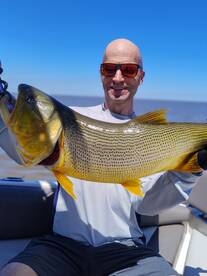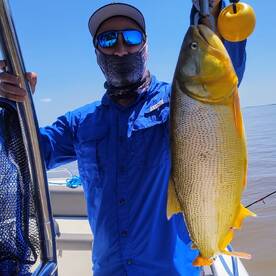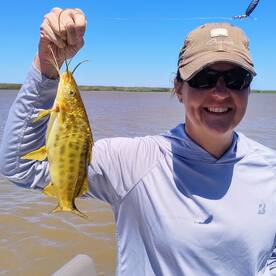Good Golden dorado bites
March 17, 2025
Tigre
9 photos
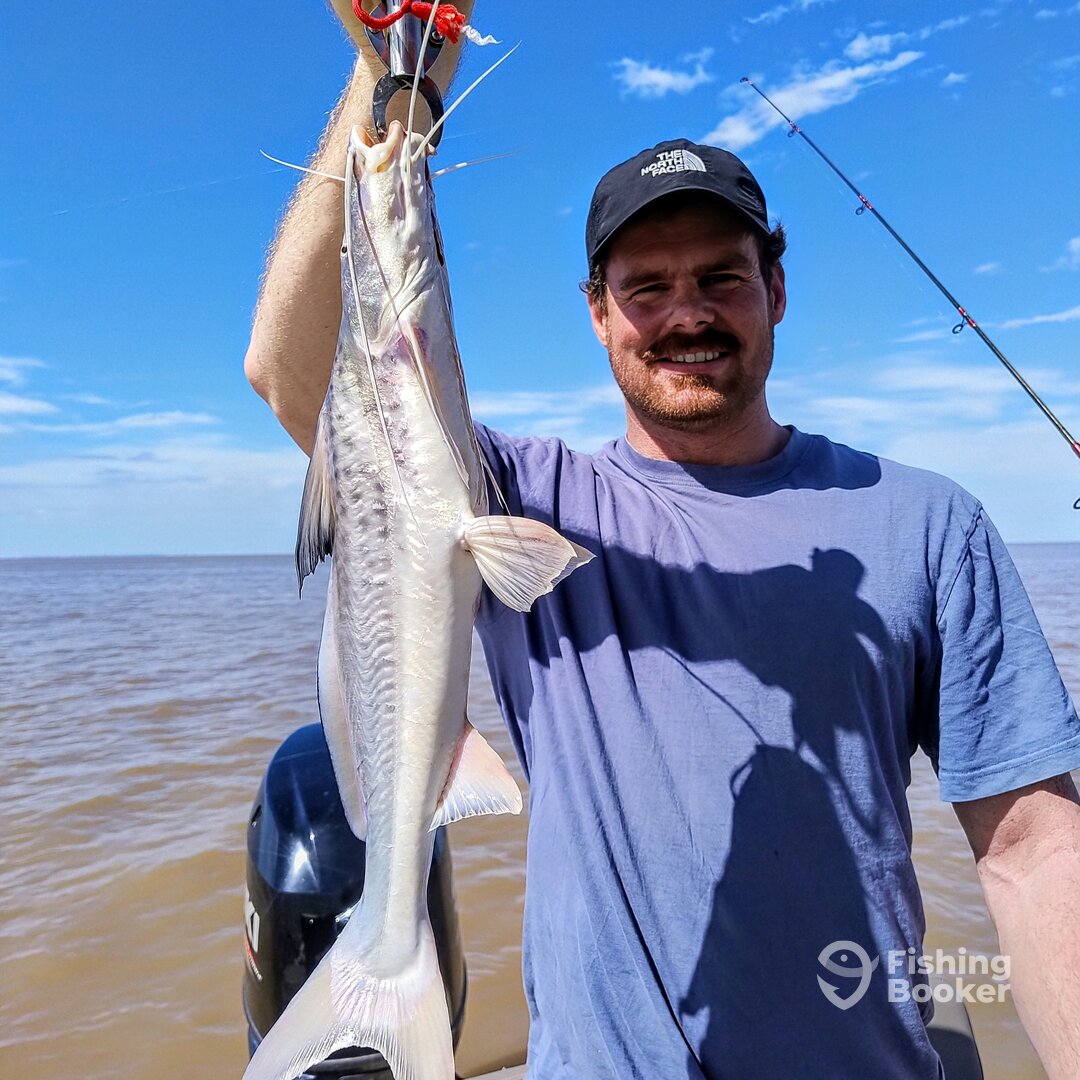

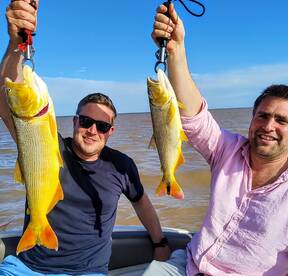 +6
+6

Golden Dorado

Catfish
Trip Summary
Trip Summary
We went on a four-hour fishing trip. This time it was in the afternoon, after a morning with a rising river, some rain, low water pressure, and a strong northerly wind. This time we chose to drift fish in an area of banks and small channels about a 45-minute sail from the port. Almost halfway between Argentina and Uruguay.
Some lines were weighted with a 10-gram lead, and one was rigged with a sliding buoy, allowing the bait to work at a depth of 80 centimeters.
We used several types of live bait: eels, moray eels, and small fish with the hook through their backs.
We were able to catch several golden dorado and ultimately landed six or seven on the boat.
The water is still warm (25/27 degrees Fahrenheit depending on whether it's a bank or a channel), which makes the dorados very aggressive and eager to take bait.
Towards sunset, the wind shifted to the south/southeast, and the intensity of the golden dorado strikes diminished. Only a few piranhas were eating our bait.
We decided the fishing was done and sailed back to the port without any problems.
As always, if you have any questions or would like to know more about fishing in Argentina, please don't hesitate to contact me.
Captain Mauricio


